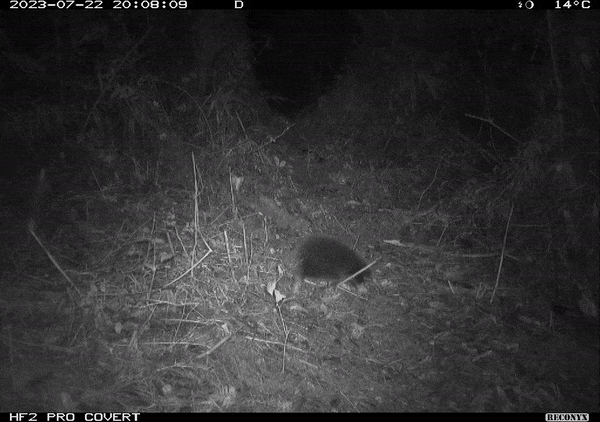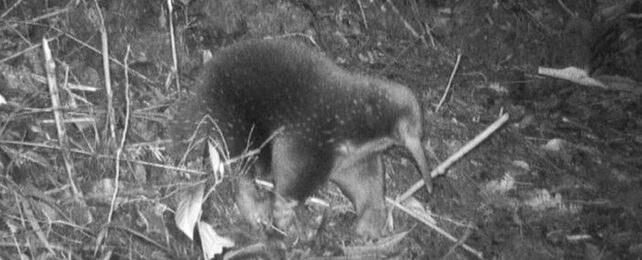Attenborough's long-beaked echidna has been feared extinct for over 60 years, but researchers just provided video evidence that this bizarre egg-laying mammal is still alive in Indonesia's Cyclops Mountains, known to locals as Dafonsoro or Dobonsolo.
The international team of researchers was euphoric at the sight of the small, spiked, and fuzzy mammal wobbling awkwardly across their hard-earned, grainy, black-and-white footage.

"The discovery is the result of a lot of hard work and over three and a half years of planning," explains Oxford University biologist James Kempton.
His team endured an earthquake, malaria, and even a leech to an eyeball, all to obtain these tiny snippets of footage from just one of over 80 trail cameras. It was only on the last day of their four-week expedition that the rare echidna even appeared.
Only a handful of egg-laying mammals remain on Earth, including one species of platypus and three other species of echidna. Monotremes survived the mass extinction that took out non-avian dinosaurs, but all of Earth's most ancient surviving mammals are declining in numbers now, except for Australia's short-beaked echidna (Tachyglossus aculeatus).
Zaglossus attenboroughi, named for the British broadcaster and biologist David Attenborough, is the most critically endangered of them all.
"Attenborough's long-beaked echidna has the spines of a hedgehog, the snout of an anteater, and the feet of a mole. Because of its hybrid appearance, it shares its name with a creature of Greek mythology that is half human, half serpent," says Kempton, in reference to the name 'echidna'.
"It appears so unlike other mammals because it is a member of the monotremes – an egg-laying group that separated from the rest of the mammal tree-of-life about 200 million years ago."
Rumors from hunters and indirect signs of the rare monotreme kept hope of its existence alive, including snout 'pokings' identified by scientists in 2007. Thanks to Kempton and his team's dedication we now have the first scientific evidence in 62 years that these unique creatures are not gone forever. At least not quite yet.
We still have no idea how few are out there.
These animals are so difficult to find in part due to their solitary natures. They only come together in July to mate. Otherwise they spend their days resting in burrows or hollow logs and their nights foraging alone through dense jungle undergrowth for earthworms, insect larvae, ants, and termites.
"We have spent years building a relationship with the community of Yongsu Sapari, a village on the north coast of the Cyclops Mountains," explains Kempton. "The trust between us was the bedrock of our success because they shared with us the knowledge to navigate these treacherous mountains… "
The Cyclops Mountains are the only place Z. attenboroughi has ever been observed.
"Given so much of that rainforest hasn't been explored, what else is out there that we haven't yet discovered?" Kempton asked Nonah Fisher and Charlie Northcottat at the BBC. "The Attenborough long-beaked echidna is a symbol of what we need to protect."
Sir David Attenborough himself is apparently "absolutely delighted".
